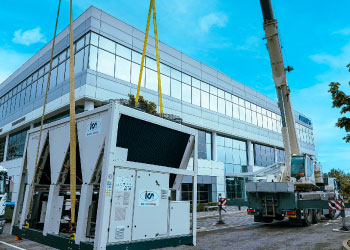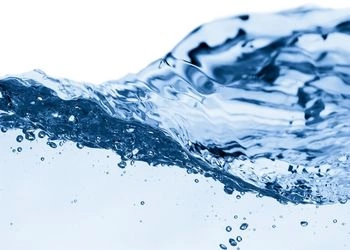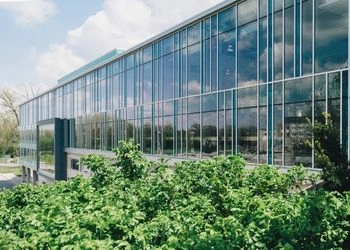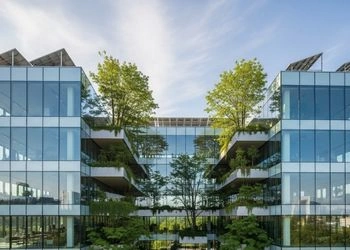Commercial HVAC Systems & Commercial Chillers: Understanding the Basics
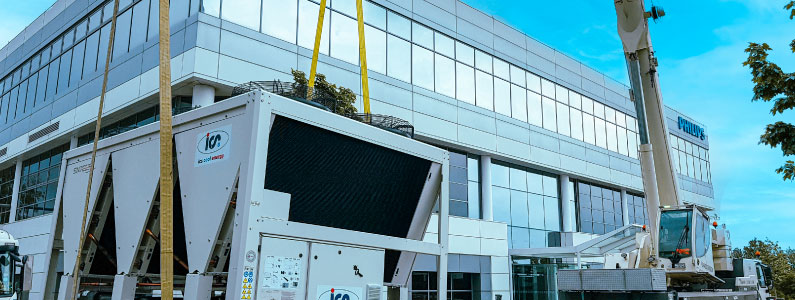
Commercial HVAC systems have an important role to play in the comfort, productivity and wellbeing of teams in commercial buildings. In industrial settings, these commercial chiller systems play a pivotal role in temperature regulation for larger office buildings, manufacturing, food processing and as data centre cooling systems, for example. The best commercial chillers and HVAC solutions depend on a range of factors including the size and purpose of your building.
In this blog, we give you a quick overview of these systems. From installation to maintenance, ensure your chiller system is optimised for your business and your budget.
What are Commercial HVAC Systems?
Commercial HVAC systems combine heating, ventilation and air conditioning into a single installation working in unison. They have the capacity to service even extensive business environments. Working with installation and maintenance specialists ensures that your commercial system is a match for your operations.
What is a chiller?
Chillers provide the cooling capacity of HVAC systems. This lowers the temperature of a building.
In commercial buildings, occupants and equipment generate heat, which requires the right HVAC chillers for effective and efficient cooling. In simple terms, they work by moving heat from one location to another. Industrial chillers do this on a large scale.
Different chiller designs exist, but HVAC chillers essentially use a refrigeration cycle to function. Chillers comprise four essential components: an evaporator, a compressor, a condenser and an expansion unit. Chiller refrigerant is heated and becomes a gas, which is then directed into a compressor, which increases pressure.
High-pressure refrigerant then moves to the condenser. At this point in the cycle, heat is expelled using water or air, turning it into a high-pressure liquid. Condensed refrigerant then moves to the expansion unit, where it is passed through a valve that lowers pressure of the refrigerant, allowing the cycle to begin again.
What Are Some Common Commercial Chillers?
Water-cooled chillers and air-cooled chillers are types of vapour compression chillers. These systems function using electric-powered compressors to drive refrigerant liquids around the chiller system.
- Air-cooled chillers have fans that blow air across finned tubes containing refrigerant to remove heat. These are best-suited to small- to medium-sized facilities and work most effectively in temperatures below 35°C.
- Water-cooled chillers transfer heat from vapour to water in the condenser. This is then pumped to cooling towers, where the heat is released outside the building. This is an efficient choice for medium and large commercial buildings.
- Absorption chillers are best-suited to large areas and utilise heated liquid or refrigerant, which goes through the condenser as vapour. It is transformed back into a liquid and passed through an absorber, where it is transformed into vapour again – a process that causes cooling. Ammonia chillers are a kind of absorption chiller.
- Centrifugal chillers compress refrigerant using energy and centrifugal force. Liquid compressed under pressure releases heat. These chiller systems are the most efficient option for large and industrial spaces.
Special chiller systems exist, like glycol chillers. This chiller system uses an anti-freeze substance called propylene glycol. This chiller system is commonly found in food production settings.
Commercial HVAC Systems and Commercial Chillers Installation and Maintenance
Investing in the right-sized commercial chiller and HVAC system is an important starting point for any commercial space. This affects the efficiency of running these systems and their effectiveness. This is especially important for industrial chillers and temperature-sensitive commercial environments like data centre cooling systems.
A commercial chiller system requires capital investment – and working with installation and maintenance specialists is the best way to ensure return on investment, optimal performance and lifespan of this essential equipment.
Top Maintenance Tips
- Regular chiller maintenance works to prevent costly repairs and system failures. This includes inspections and cleaning components, checking refrigerant levels and replacing worn parts. There is a legal requirement to maintain and leak test chillers and the frequency of maintenance is dependent on the weight of refrigerant gas within the system.
- Work with accredited maintenance teams. At Voltix Services, we operate to the highest industry standards, provide instant access to all records and upcoming maintenance requirements through our online client portal and take the time and effort out of maintenance processes.
- Level up your maintenance with data insights. We utilise IoT sensors to support high-level maintenance solutions. These sensors provide alerts around unusual and undesirable changes within chiller systems. Remote temperature monitoring provides an early warning system for faults and prevents potentially extensive (and expensive) issues.
Work With Voltix, the Problem-Solvers
Contact Voltix Services today to find out more about our installation and maintenance services for commercial HVAC systems and commercial chillers.

